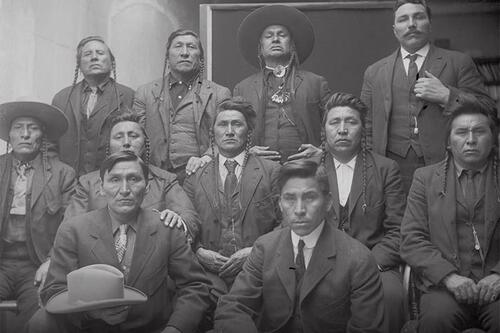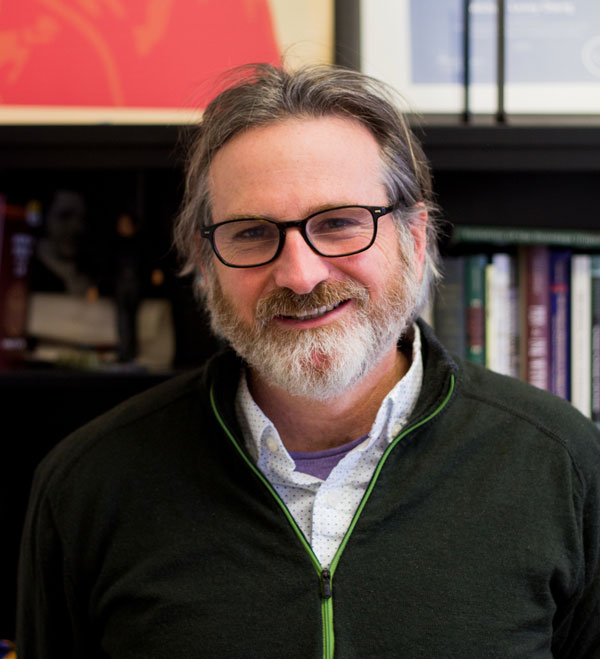
Crow delegation to Washington, D.C. in the early 20th century. Image used for the cover of Oberg's "Native America: A History, Second Edition."
Professor Michael Leroy Oberg’s revised textbook, “Native America: A History, Second Edition,” hit college bookstore shelves just in time for the new academic year. Oberg, a SUNY Distinguished Professor of history at Geneseo, says that the new edition includes expanded discussions on the law and native history since World War II.
Oberg features twelve native communities in the book which helps demonstrate the diversity of native peoples and their experiences.
“Some of the tribes on the Northern Plains, for example, were as significant a force in shaping North American history as the English, French, Spanish, and the Dutch were,” Oberg says. The Comanche, who resided on the southern plains “destroyed, in many ways, the Spanish empire in the American Southwest in the 17th century, raiding Spanish areas as if they were a stockyard where they could get horses, slaves, and all kinds of things,” says Oberg.
In researching the latest scholarly literature for the new edition, Oberg says he was excited to see that younger scholars are now looking at native grounds that people like the Potawatomis in the upper Midwest, the Ojibwas in the western Great Lakes and Canada, and the Iroquois in the northeast, really held—and influenced—the balance of power. “They weren’t just reacting to the colonizing powers—in some cases, they were also driving the narrative,” Oberg explains. “They were creating and shaping history as much as the founding fathers.”
 Oberg also includes material on Coast Salish peoples, in today’s Washington State, who add to the geographic diversity of the text, but also because of their unrelenting challenges to defend and retain their rights in courts of law. “For about the past 50 years, the Coast Salish have been at the center of a lot of significant legal battles, including fishing rights, the Red Power movement, and tribal criminal jurisdiction.”
Oberg also includes material on Coast Salish peoples, in today’s Washington State, who add to the geographic diversity of the text, but also because of their unrelenting challenges to defend and retain their rights in courts of law. “For about the past 50 years, the Coast Salish have been at the center of a lot of significant legal battles, including fishing rights, the Red Power movement, and tribal criminal jurisdiction.”
“I think it’s essential to an understanding of American History that the law is written to protect and promote certain interests,” Oberg says, “and those interests are generally not the interests of Native American people. The law and the court system have been a fairly effective and devastating agent of colonialism throughout American history.”
Also new for the second edition, is the linking of the textbook to Oberg’s website and blog, which department colleague, Yvonne Seale, an assistant professor of medieval history, helped him create.
“I keep up on the events of the communities that I teach, so if something happens, I blog about it and ideally, teachers or students can get current context on to what they’re studying,” says Oberg. The website, michaelleroyoberg.com, also provides resources such as primary source documents, bibliographic essays, and exam and discussion questions—one-stop shopping for students and teachers alike.
Ultimately, Oberg says that his goal was to make a book that is really useful and that helps awaken students’ interest in and passion for a subject that he’s spent the last 30 years teaching, studying, and writing about.